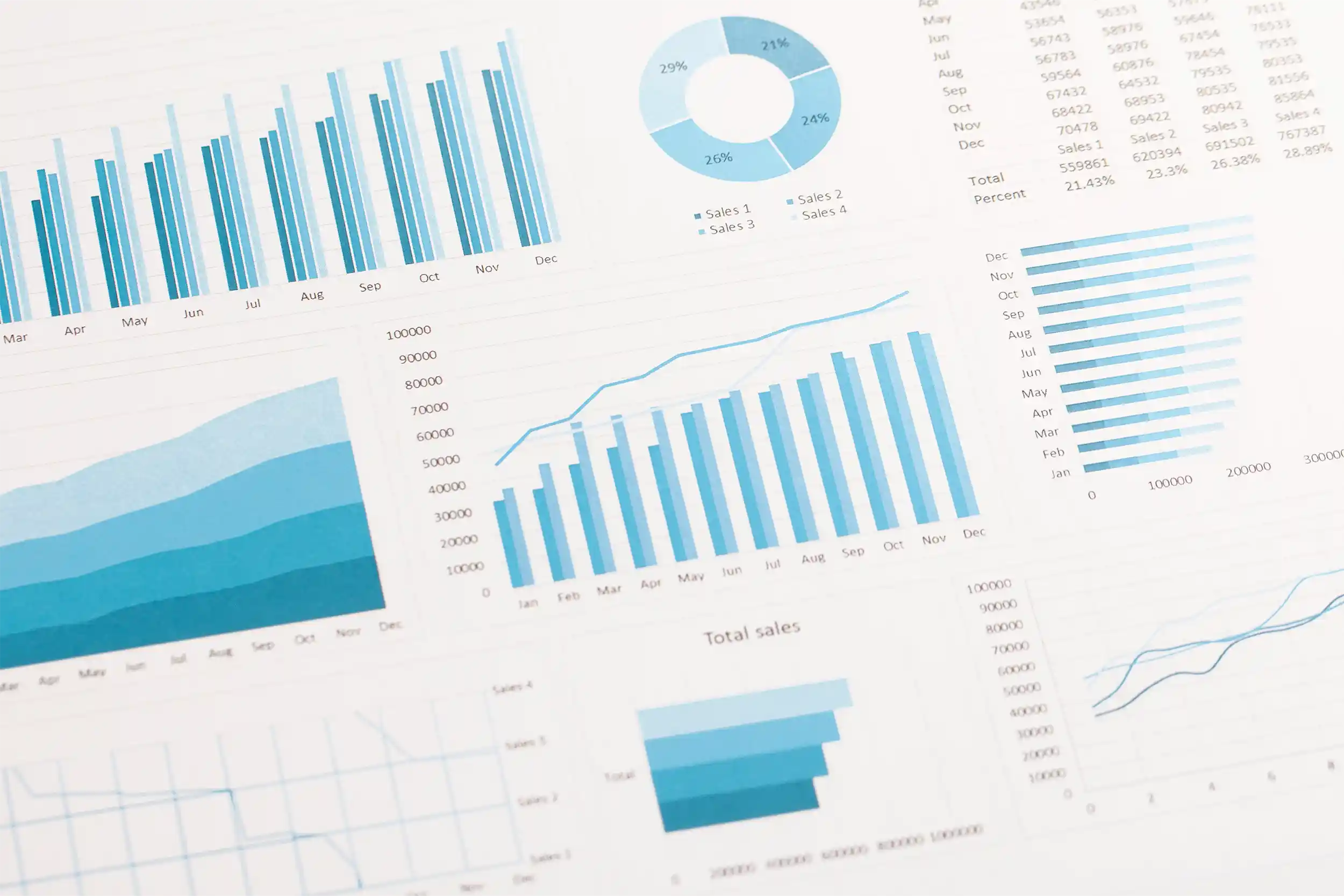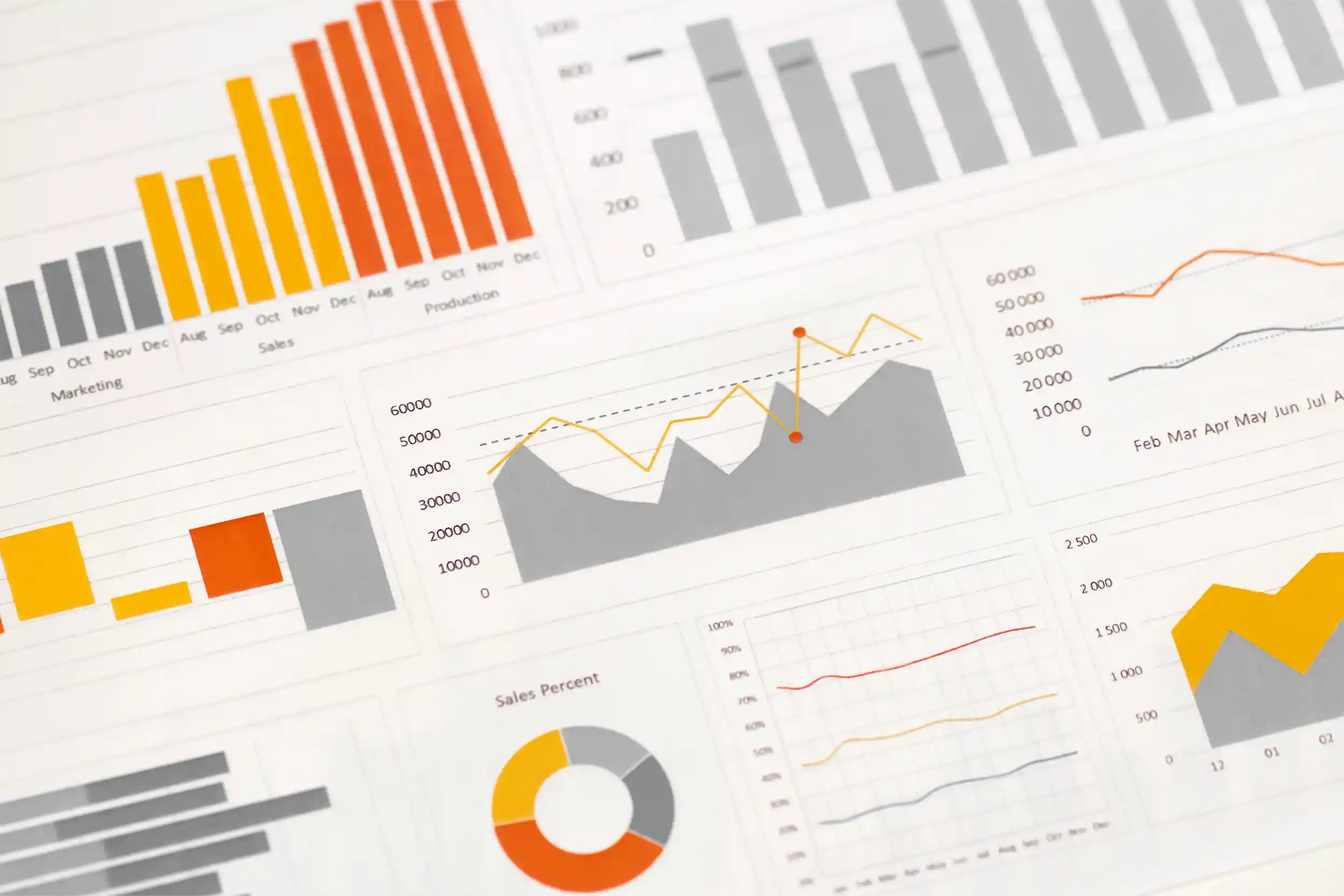In today’s rapidly evolving digital landscape, leveraging data analytics is no longer just an option but a necessity for making informed design decisions. As mobile traffic continues to surge, businesses are compelled to prioritise mobile optimisation to offer seamless experiences across all devices as more smartphone and tablet users access websites than ever. Concurrently, the rise of voice search technology is reshaping user interaction, necessitating that businesses tailor their content to improve visibility in voice search queries driven by virtual assistants like Siri, Alexa, and Google Assistant. This emphasis on customised user experiences reflects growing consumer expectations for personalised content and recommendations using dynamic content, product recommendations, and personalised messaging to drive engagement and conversions. In this blog post, we explore the pivotal role of data analytics in guiding design decisions to enhance digital outcomes.
Data Analytics: The Shift from Intuition to Evidence-Based Design
The design landscape has evolved from relying purely on intuition to incorporating evidence-based methodologies, reflecting a more analytical approach to decision-making. This evolution is underscored by 90% of enterprise analytics and business professionals acknowledging the importance of data and analytics in their organisation’s digital transformation efforts. Adopting a data-driven approach brings about substantial benefits, positioning organisations to be significantly more efficient in customer acquisition and retention. Indeed, companies embracing data analytics are 23 times more likely to acquire new customers, six times as likely to retain existing ones, and 19 times more profitable.
Leveraging big data empowers businesses to make strategic decisions with greater precision. It enables improved operational control and provides deeper insights into customer behaviours and preferences. In fact, 69% of businesses report enhanced decision-making capabilities through data, with 54% noting improved operational control and 52% recognising a better understanding of their customers.
The shift towards evidence-based design is not just about numbers; it’s about utilising data to craft user-centred experiences that resonate with target audiences. The analytical tools at a designer’s disposal—ranging from heat maps to user feedback systems—allow for an iterative design process that continuously refines and enhances user interaction. This focus on data-centric design fosters an environment where every element, from layout to content, is scrutinised and optimised based on concrete evidence rather than gut feeling.
In sum, the transition to evidence-based design is not merely a trend but a fundamental shift that drives measurable improvements in user experience, operational efficiency, and overall business performance. This analytical approach ensures that design decisions are substantiated, strategic, and aligned with user needs and business objectives.

Understanding User Behaviour Through Data
Understanding user behaviour through data analytics provides invaluable insights that help shape effective design strategies. Businesses leveraging big data see substantial financial benefits, increasing their profits by 8 percent and reducing costs by 10 percent. This competitive advantage is evident in various sectors, with 62% of retailers and 63% of cross-industry respondents acknowledging the significant impact of information and analytics. By harnessing this data, companies can tailor their offerings to meet user needs more effectively, thus enhancing user engagement and satisfaction.
In the realm of digital design, understanding user behaviour goes beyond simple metrics. Advanced analytics tools can track detailed user interactions, such as clicks, scrolls, and time spent on specific sections of a webpage. These insights reveal patterns and preferences, enabling designers to refine layouts, improve navigation, and prioritise content that resonates with the audience.
Additionally, predictive analytics can forecast user actions, allowing businesses to pre-emptively address potential issues or optimise the user journey. For instance, if data indicates a high drop-off rate at a particular stage in the purchasing process, designers can investigate and implement targeted improvements to streamline the experience.
Moreover, user feedback systems integrated into data analytics frameworks provide qualitative insights that complement quantitative data. Collecting and analysing feedback from surveys, reviews, and direct user comments gives a holistic view of user sentiment, driving more nuanced and user-centred design decisions.
The application of data analytics in understanding user behaviour extends to personalisation strategies. By analysing historical data and user preferences, businesses can create bespoke experiences that cater to individual users. This approach not only boosts user satisfaction but also increases the likelihood of conversions and customer loyalty.
The strategic use of data analytics to comprehend user behaviour ultimately equips businesses with the tools to craft intuitive, efficient, and engaging digital experiences. As companies continue to refine their data-driven design methodologies, the depth of user insight gained will further enhance their ability to meet and exceed user expectations.

Data Analytics: Enhancing User Experience with Data Insights
Data analytics plays a vital role in refining user experiences, particularly as e-commerce continues to expand. To optimise for conversion rate optimisation (CRO), businesses are adopting user-friendly checkout processes, relevant product recommendations, and personalised offers. This approach not only improves user satisfaction but also drives higher conversion rates as the growth of e-commerce accelerates, with more consumers shopping online for various products and services.
By analysing data, companies can identify pain points in the user journey and implement changes that enhance overall user experience. For example, data can reveal common drop-off points in the checkout process, allowing businesses to streamline steps and reduce friction. This, in turn, minimises cart abandonment and boosts sales.
Moreover, data insights enable the creation of targeted and dynamic content that resonates with individual users. By understanding preferences and behaviours, businesses can present users with highly relevant products, offers, and information, thereby increasing engagement and satisfaction. Personalisation extends to all aspects of the user experience, from homepage layouts to email marketing campaigns, each tailored to meet specific user needs.
Advanced data analytics also facilitates real-time decision-making. By continuously monitoring user interactions and behaviours, businesses can make on-the-fly adjustments to optimise user experiences. For instance, if a particular product is trending, real-time data can trigger promotional banners or suggest similar items, enhancing the user journey.
Ultimately, the strategic application of data analytics in enhancing user experience enables businesses to stay agile and responsive to user needs, creating more effective and enjoyable interactions.
Case Studies: Success Stories in Data-Driven Design
The transformative power of data analytics is best illustrated through real-world success stories. Consider the case of a major e-commerce retailer that leveraged data analytics to overhaul its website design. By analysing user behaviour data, they identified key drop-off points in the checkout process. Implementing data-driven changes, such as simplifying forms and adding progress indicators, resulted in a 30% increase in completed transactions and a significant reduction in cart abandonment rates.
Another compelling example comes from the travel industry. A leading online travel agency used data analytics to personalise user experiences. By analysing browsing patterns and purchase history, they tailored recommendations for flights, hotels, and holiday packages. This personalisation strategy not only improved user engagement but also boosted conversion rates by 20%. Additionally, the data insights helped optimise their marketing efforts, making ad spend more effective and targeted.
The healthcare sector also offers noteworthy examples. A telehealth platform employed data analytics to enhance its user interface and patient journey. By tracking user interactions, they identified areas where patients frequently encountered difficulties. Streamlining these touchpoints and introducing personalised health recommendations led to higher patient satisfaction and increased usage of the platform.
In the media industry, a streaming service utilised data analytics to understand viewer preferences better. They implemented a recommendation engine powered by user data, which suggested shows and movies tailored to individual tastes. This not only increased viewer retention but also encouraged users to spend more time on the platform, driving subscription growth.
These case studies underscore the significant impact of data-driven design across various industries. By harnessing data analytics, companies can create more intuitive, engaging, and efficient digital experiences that meet user needs and drive business success.

Data Analytics: Tools and Techniques for Data-Driven Design
In the realm of data-driven design, the use of sophisticated tools and techniques is essential for extracting meaningful insights from user data. One of the most powerful tools at a designer’s disposal is heat maps, which visually represent user interactions on a webpage, highlighting areas of high engagement and pinpointing elements that may need adjustment. Coupled with A/B testing, where two versions of a design element are compared to see which performs better, these tools provide actionable insights that can lead to more effective design choices.
Advanced analytics platforms, such as Google Analytics and Adobe Analytics, offer a comprehensive suite of metrics and reporting features. These platforms allow designers to track user behaviour across multiple touchpoints, offering a holistic view of user engagement and interaction. By integrating these analytics platforms with customer relationship management (CRM) systems, businesses can gain deeper insights into user journeys and preferences, enabling more personalised design strategies.
User feedback systems also play a crucial role in data-driven design. Tools like surveys, reviews, and direct feedback channels provide qualitative data that complements the quantitative insights gained from analytics platforms. This combination of data types ensures that design decisions are well-rounded and consider both statistical trends and individual user experiences.
Additionally, session recording tools, which capture real-time user interactions, offer another layer of insight. By watching how users navigate a site, designers can identify usability issues and areas for improvement that might not be evident through traditional analytics alone.
Machine learning algorithms are increasingly being used to analyse large datasets, identifying patterns and trends that can inform design decisions. These algorithms can predict user behaviour, allowing designers to proactively enhance user experiences based on anticipated needs and actions.
Employing these tools and techniques, businesses can ensure that their design processes are data-driven, user-centric, and continuously refined to meet evolving user expectations.
Data Analytics: Overcoming Challenges in Data-Driven Design
Implementing a data-driven design approach, while highly advantageous, presents several challenges that must be navigated with care. One significant hurdle is ensuring data privacy and security, which have become critical concerns for both businesses and consumers alike. Adherence to data protection regulations such as GDPR and CCPA is paramount, as compliance with these rules is vital.
To address these challenges, businesses must commit to transparency and ethical data use, which fosters trust and protects user information. Implementing robust data governance frameworks and regularly updating security protocols can help mitigate risks associated with data breaches and unauthorised access. This commitment not only protects the company from legal repercussions but also strengthens consumer confidence in the brand.
Another challenge is managing the sheer volume of data generated. It can be overwhelming to sift through vast datasets to extract actionable insights. Employing advanced analytics tools and machine learning algorithms can aid in processing and analysing this data more efficiently, ensuring that valuable information is not lost in the noise.
Additionally, integrating data analytics into the design process requires a cultural shift within organisations. It necessitates cross-functional collaboration between designers, analysts, and other stakeholders. Ensuring that all team members are on the same page and understand the value of a data-driven approach is crucial for its successful implementation.
Lastly, balancing data insights with creativity is a delicate act. While data provides essential guidance, designers must also rely on their intuition and creativity to craft engaging and innovative user experiences. Striking this balance ensures that designs are not only data-informed but also resonate with users on an emotional level.
Data Analytics: Future Trends in Data-Driven Design
Looking ahead, the integration of artificial intelligence and machine learning into design processes is set to reshape how we approach data-driven design. These technologies will allow for even more nuanced analysis of user behaviour, predicting trends and user needs with greater accuracy. As AI continues to evolve, expect to see more sophisticated personalisation strategies that can dynamically adapt content in real-time, creating highly tailored user experiences. Additionally, advancements in natural language processing (NLP) will enhance voice search optimisation, making digital interactions more intuitive and seamless. As businesses harness these cutting-edge technologies, they will be able to deliver more efficient, engaging, and responsive digital environments, setting new standards for user experience.